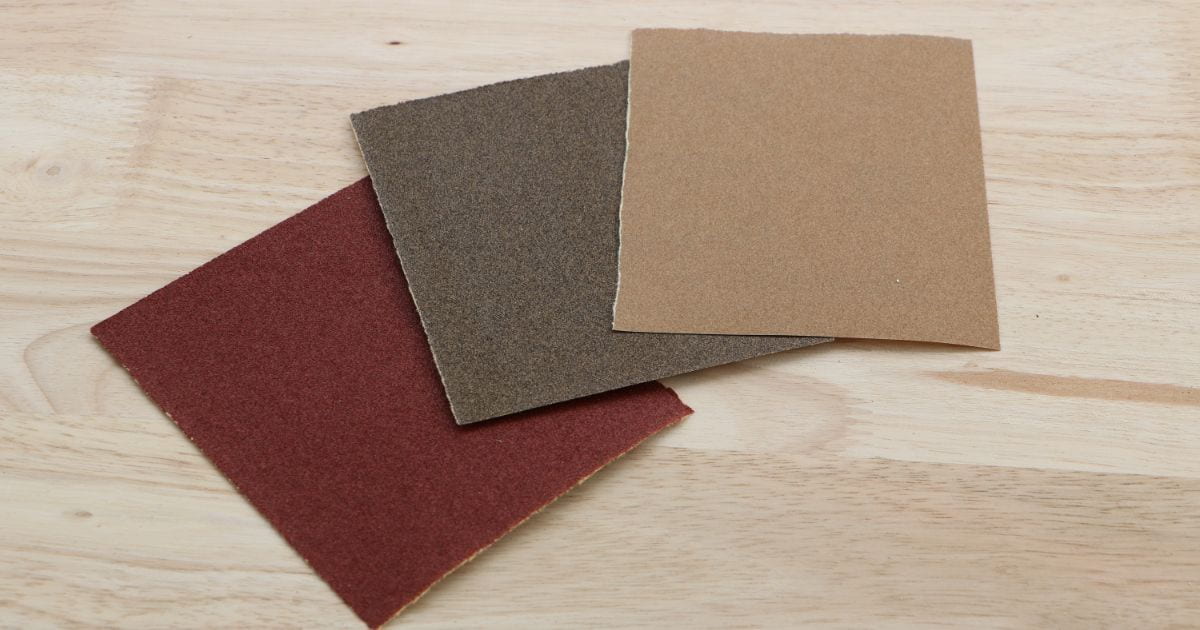Wet Sanding vs. Dry Sanding
Wet and dry sanding may serve the same purpose of creating a smoother surface. However, the truth is slightly tricky, and both achieve the same goal differently. So, naturally, you might be interested in knowing when to wet or dry sand alongside the distinction between the two.
The primary distinction between the two is that the wet sanding process creates a smoother finish than the dry sanding process. Dry sanding removes more material quickly. Generally, the final finish should be wet-sanded.
Additionally, there are some more differences to explore but let us first understand each type in detail before drawing a comparison between the two. Keep on reading to find out more about wet sanding vs. dry sanding.
What is Wet Sanding?
Wet sanding is the sanding of a substance using an abrasive and water or another lubricant. To help create a smooth and glossy finish, a liquid removes any grit particles left after dry sanding. Essentially, wet sanding helps eliminate scratches made by dry sandpaper without drawing too much of the underlying material.
Wet sanding is usually done toward the end of the woodworking process after you have already applied the finish and want to smooth out any dust nibs. You will dry sand first, then wet sand to achieve a smooth surface. The steps may be as follows:
- buffing
- polishing
- minuscule surface repairs
- touch-up work
- removal of scratches
When to Wet Sand?

The wet sanding process is required if you want your product to have a mirror-like finish. Wet sanding is an excellent choice when you want an extremely smooth finish or want to avoid the mess caused by dry sanding. In addition to woodwork, wet sanding may also be used for paint correction, removing any debris that has become caught in the paint finish, and repairing any faults or blemishes caused by an uneven paint job.
What is Dry Sanding?
Sanding wood is a method of polishing and covering the surface of the wood, as well as removing any tool marks from your job. It also allows you to highlight tiny aspects of the project, which is helpful if you're making a wood carving.
Dry sanding can be done by hand using sandpaper, a sanding stone, or with power tools such as belt sanders and disc sanders. While there is a proper way to use a power sander, most woodworkers prefer hand sanding, especially on smaller parts. Furthermore, specific heavy-duty power sanders are meant for carpentry work and might damage more delicate products.
When to Dry Sand?
Dry sanding is typically used to smooth out a surface, such as wood, to make edges less sharp, or to improve the detail of woodworking. Dry sanding provides a smooth surface and is typically done after carving on a project, but before applying stains, finishes, or paint, as these materials emphasize scratches.
Critical Differences Between Wet and Dry Sanding
Now that we have established a basic understanding of each type of sanding, it is time to compare the two.
Both types of sanding offer a smooth finish, but it is clear that wet sanding is used when a mirror-like finish is needed. However, wet sanding is probably not essential depending on what you are working on and the appearance you desire. For example, in the case of a matte finish, wet sanding is not crucial.
Furthermore, dry sanding is essential when you need to remove a lot of material in a short period. However, since dry sanding removes more material, it creates more mess. Wet sanding, on the other hand, is time-consuming and removes less material. Hence, you only wet sand when you are nearing the completion of your product.
Keep in mind that the first rounds of sanding are generally done to eliminate significant and apparent faults and manufacturing errors, which need the removal of considerable amounts of material from the wood's surface.
In terms of technique, dry sanding requires a different movement than wet sanding. To get a consistent finish, dry sanding involves the use of tiny circles, whereas wet sanding demands the use of straight lines and changing directions between passes. This is done to eliminate scratches from prior passes. Wet sanding should be done lightly since you will only remove surface scratches and not much substance.
Which Sandpaper Should Be Used?

The kind of sandpaper you use for each process is a crucial concern. You should not be using a standard type of sandpaper to wet sand. Regular sandpaper's abrasive grit can accumulate with the substance being sanded. This may lead to additional scratches on the material. Now, that is something you would want to stay away from.
To avoid this issue, wet sandpaper is used for wet sanding. However, fine sandpaper called wet dry sandpaper can be used for both wet and dry sanding. It is produced with silicon carbide abrasives and has a backing made of latex rather than cloth or paper to keep it intact. Here is a 120-5000 assorted grit wet-dry sandpaper you should consider purchasing.
While wet sanding necessitates higher grit sandpaper, for dry sanding, lower grit sandpaper is used. Both sanding processes require you to move from coarser grits to finer grits.
The Bottom Line
While the purpose of wet and dry sanding seems to be similar, the utility of each is different. Both procedures are distinct and necessary in the woodworking process. Usually, you have to make use of each to achieve a finished look. However, the degree to which you wet or dry sand varies regarding your desired look. Those are the differences between wet sanding vs. dry sanding.
Last Updated on September 14, 2022 by Tom Bradly
